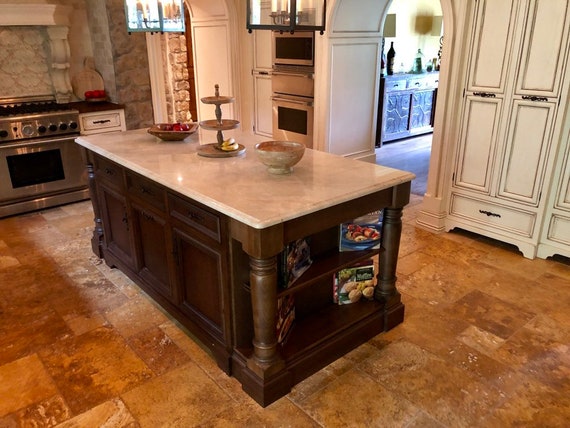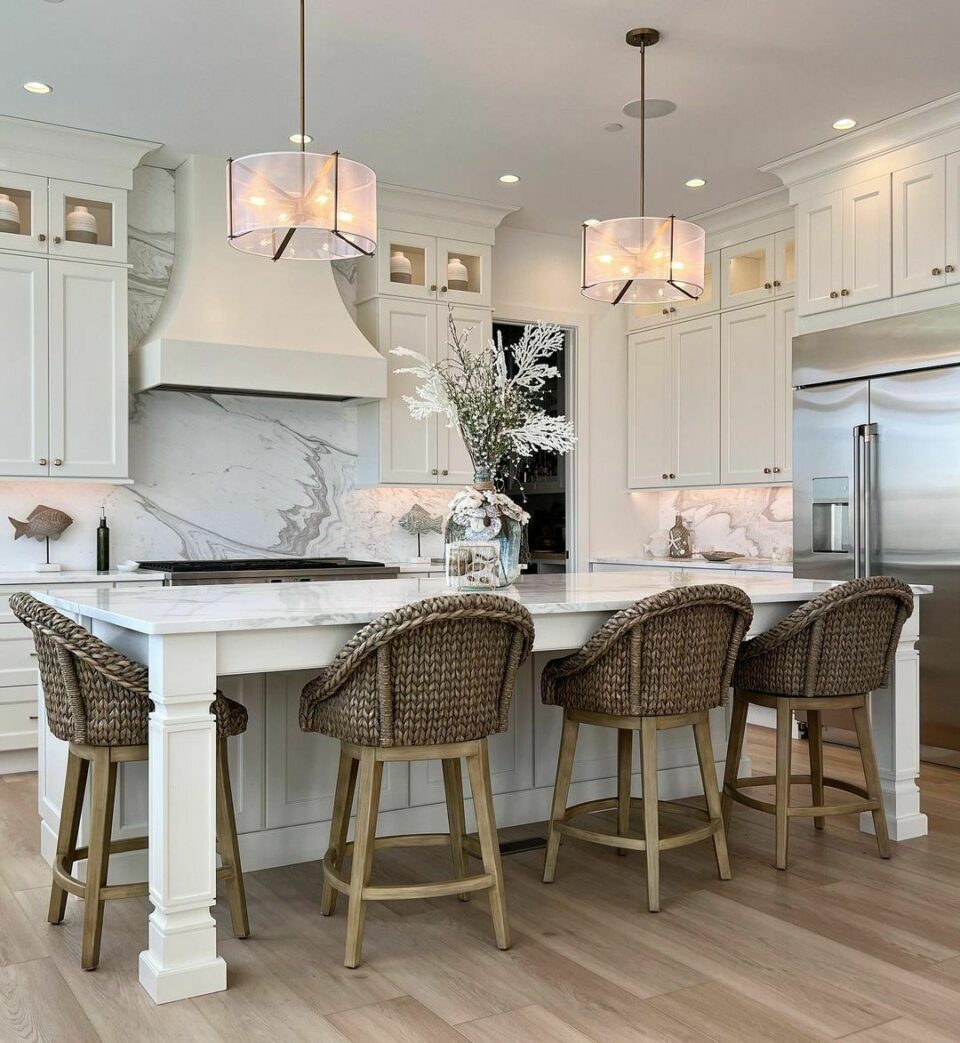Top Considerations When Picking a Kitchen Island Leg for Modern Kitchen Area Insides
In the world of contemporary cooking area interiors, the choice of a cooking area island leg is critical, affecting both looks and performance. As these elements intertwine, they raise even more concerns about how to accomplish the best equilibrium between design and functionality, leaving one to contemplate the implications of each decision on the total kitchen area experience.
Material Selections
When it involves selecting a kitchen area island leg, product selections play a crucial function in both appearances and functionality. kitchen island leg. The most common materials consist of timber, metal, and composite options, each offering distinct advantages and possible disadvantages
Wood is favored for its heat and classic charm, giving a classic appearance that enhances various cooking area styles. It is extremely functional, permitting customization in terms of finishes and shades. Wood might need more upkeep to stop bending or damages from dampness.
Steel, on the other hand, brings a modern and industrial style to cooking area islands. Stainless steel and wrought iron are preferred options, recognized for their longevity and resistance to use. They can stand up to the rigors of everyday use yet may lack the heat associated with wood.
Composite products, such as engineered timber or synthetic blends, offer a balance between price, longevity, and visual appeals. These alternatives are often designed to mimic the look of all-natural materials while offering resistance to scrapes and spills.
Ultimately, the selection of product ought to straighten with the general kitchen layout and planned usage, making certain that the kitchen island leg is both visually enticing and practical.
Style and Style
The style and layout of a kitchen island leg substantially add to the overall aesthetic of the area, matching the chosen material. When selecting the leg design, consider the architectural style of the cooking area. For example, streamlined, minimal legs constructed from stainless-steel or acrylic harmonize with contemporary styles, while ornate, transformed timber legs enhance typical or farmhouse aesthetics.
Additionally, the surface of the leg can influence the visual influence; a refined chrome or matte black finish might evoke modern-day style, while distressed timber speaks with rustic charm. The leg's shape additionally plays a crucial function-- directly, angular kinds share a more industrial feel, whereas curved or tapered legs present a softer, more welcoming appearance.
Integrating ornamental aspects, such as makings or embellishments, can add personality and character to the kitchen area island, further enhancing its function as a prime focus. Inevitably, the selected leg style should not just align with the overall kitchen area design however additionally mirror the homeowner's personal preference, ensuring that the cooking area island becomes a useful and harmonious focal point within the modern-day kitchen inside.
Height and Percentages
Achieving the ideal height and proportions for a kitchen area island leg is vital for both capability and appearances. Kitchen area islands typically range in height from 28 to 36 inches, depending on their planned usage-- whether as a cooking surface area, dining location, or office. Requirement counter top elevation is approximately 36 anchor inches, making it important that the legs you pick enhance this elevation to offer a seamless, incorporated look.
Proportions likewise play an essential function in the visual equilibrium of the cooking area. A slim leg might be appropriate for a contemporary or minimalistic island, while a much more substantial leg might be needed for rustic or conventional styles.
When picking the height and percentages of the cooking area island leg, keep in mind the total design theme of your kitchen. This attention to information not just boosts the functionality of the space however also adds to a aesthetically appealing and natural interior decoration.
Stability and Assistance
Consistently making certain stability and support in cooking area island legs is crucial for both security and performance. A well-constructed kitchen island need to withstand day-to-day usage, consisting of weight from appliances, cooking, and celebrations. Consequently, the choice of legs ought to focus on robust products and styles that can provide adequate support.
When evaluating security, consider the leg's material-- wood, steel, or light weight aluminum frequently offer superior toughness compared to lighter choices. Additionally, the layout should feature a broad base to distribute weight equally and minimize the risk of tipping or tottering. Legs made with an A-frame or cross-bracing can considerably boost security.

Integrating these considerations will not only visit the site enhance the total safety of the cooking area space yet likewise enhance the long life and functionality of the kitchen area island, making it a valuable centerpiece in contemporary kitchen area insides.
Completing Touches
When it concerns completing a kitchen island, thoughtful ending up touches can dramatically improve both its aesthetic allure and functionality. Picking the best leg design is crucial, however complementing it with proper details can transform the entire area. Take into consideration including decorative elements such as toe kicks or walls that match the kitchen cabinetry or floor covering to produce a seamless look.

Finally, the option of coatings plays an essential function in linking the design with each other. Whether choosing for a matte, glossy, or textured coating, ensure that it lines up with the total theme of your kitchen area. A cohesive color scheme and product option will certainly boost the cooking area island, making it a fascinating focal factor. By taking note of these finishing touches, property owners can create a kitchen island that is both stunning and practical, accommodating their way of living and layout choices.
Final Thought

In the realm of modern kitchen interiors, the selection of a kitchen area island leg is essential, influencing both browse around this site appearances and capability.The design and design of a cooking area island leg substantially contribute to the overall visual of the area, complementing the picked product.Accomplishing the right elevation and percentages for a kitchen area island leg is crucial for both capability and aesthetic appeals.Consistently making sure security and support in kitchen area island legs is important for both safety and security and functionality.In recap, selecting a kitchen area island leg for modern insides requires mindful consideration of product options, layout style, height, percentages, and stability.